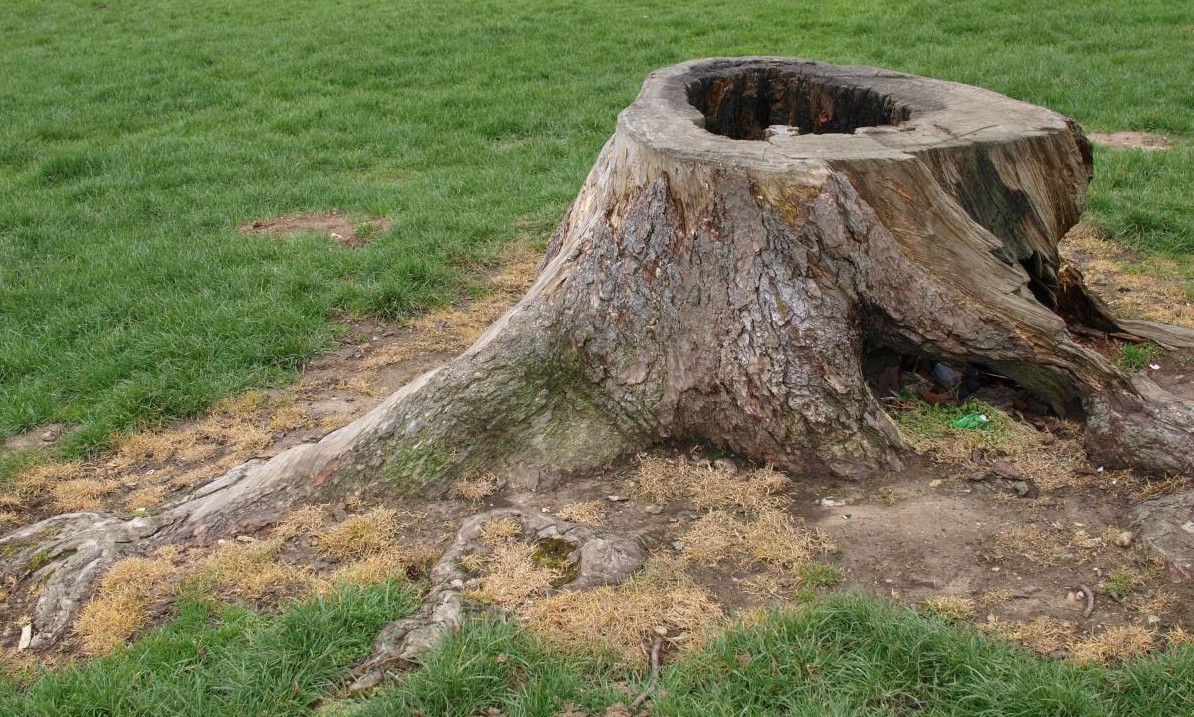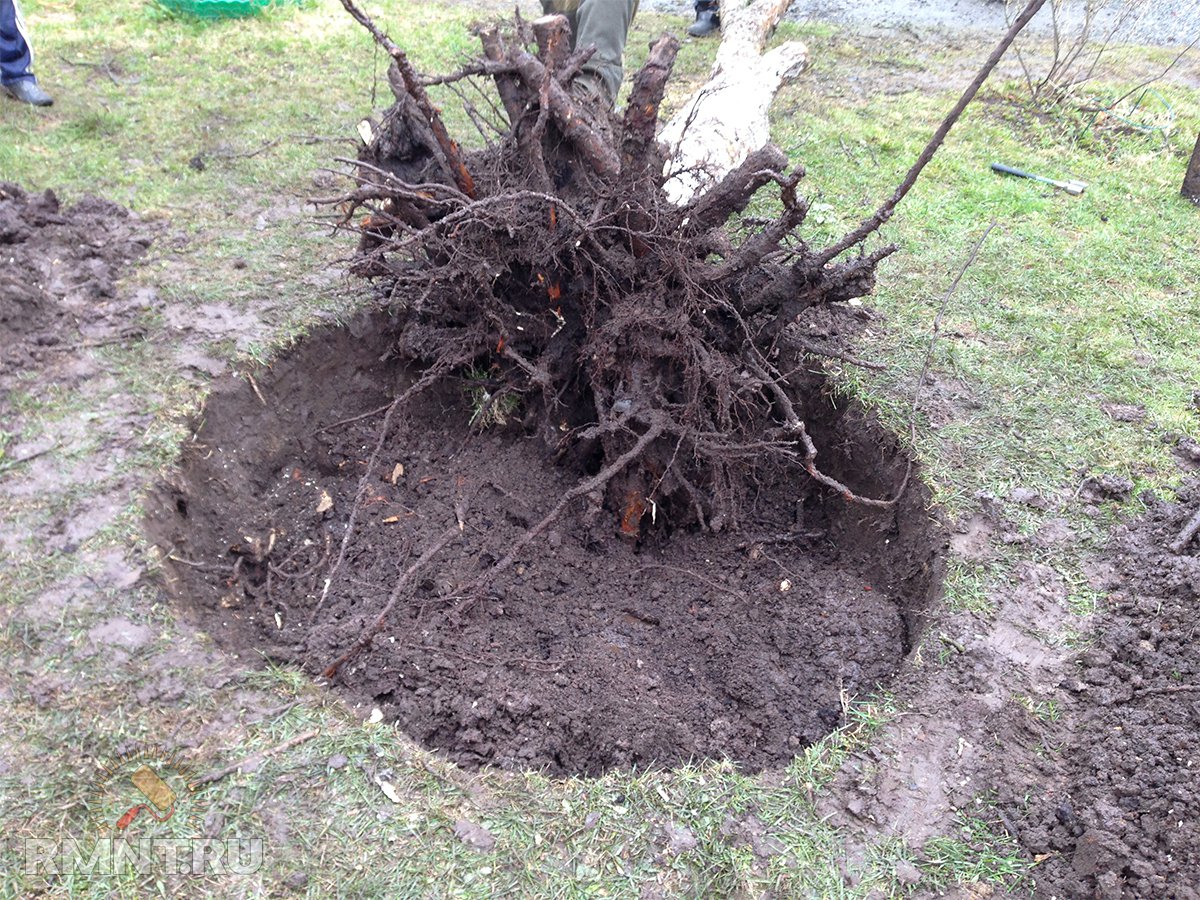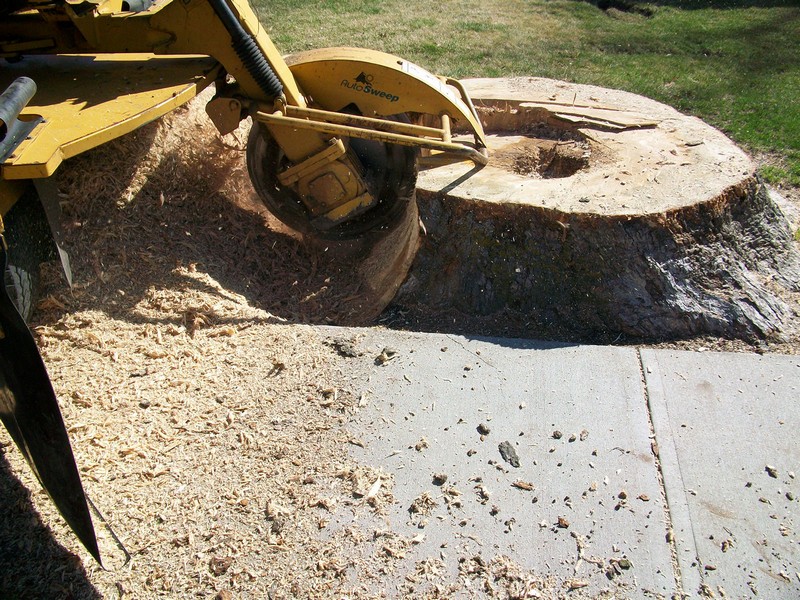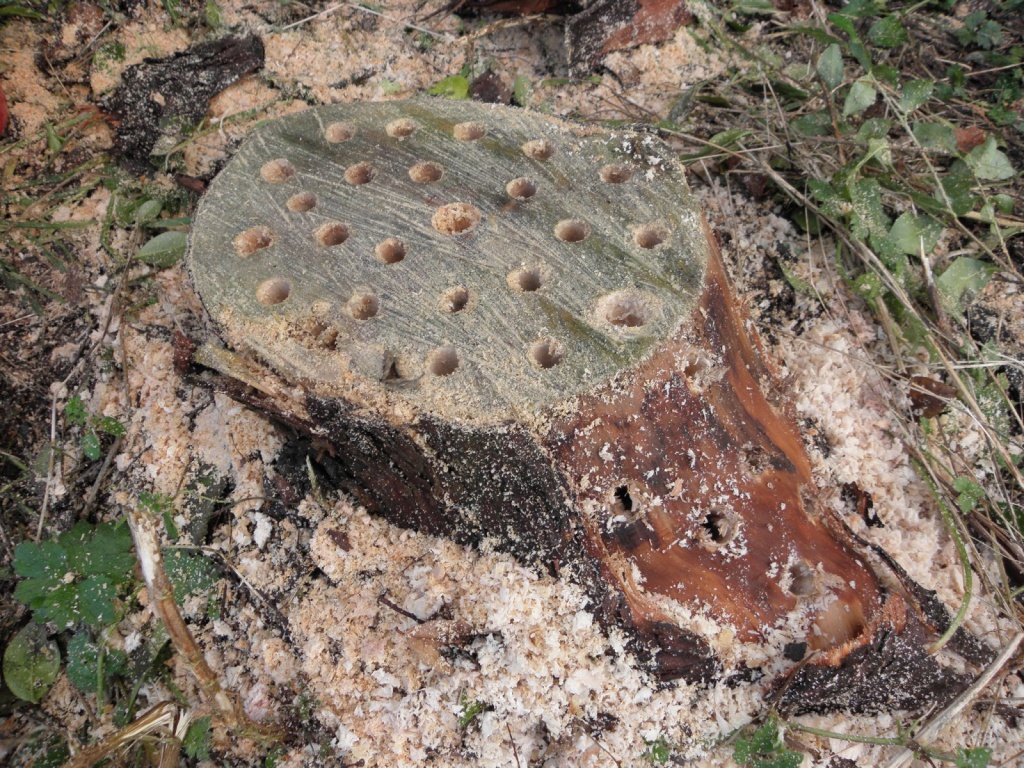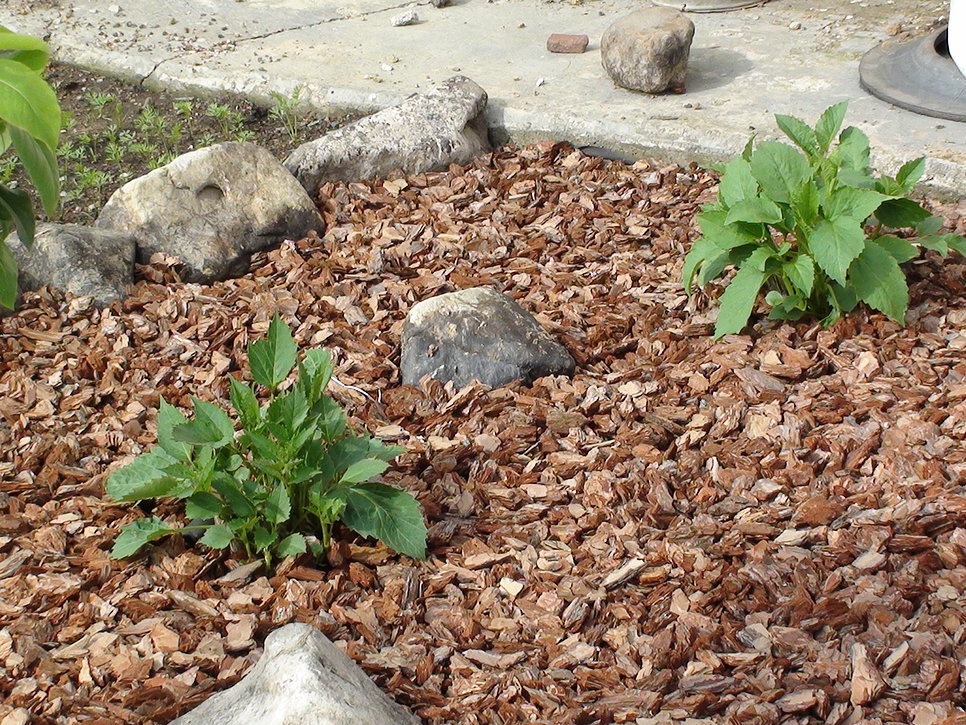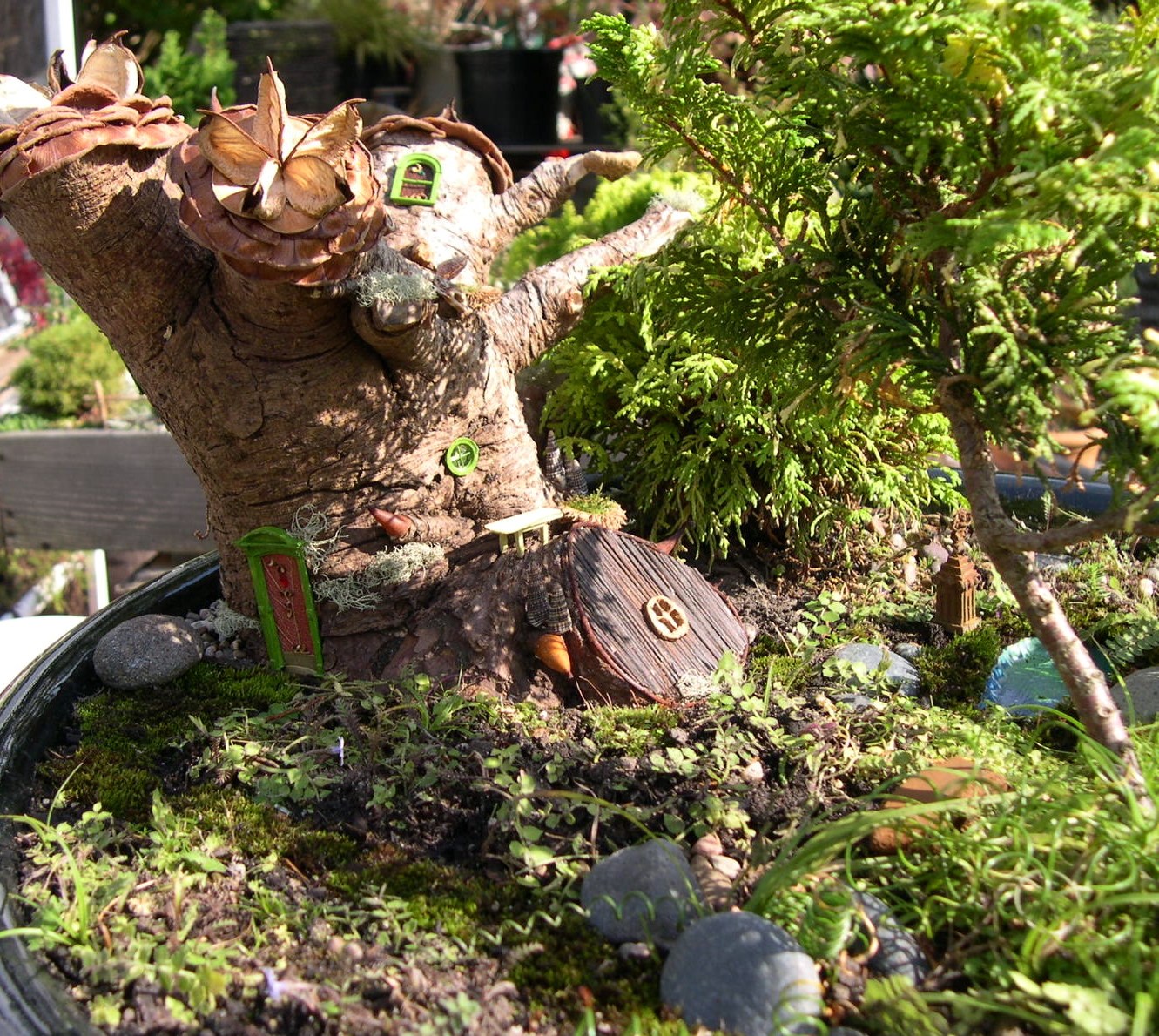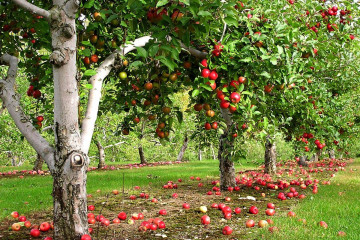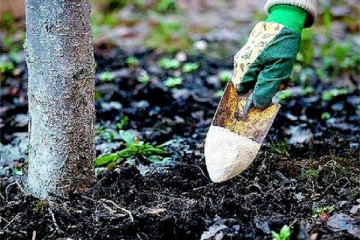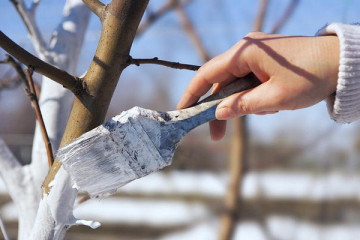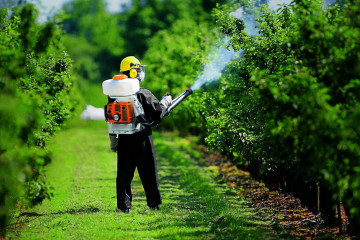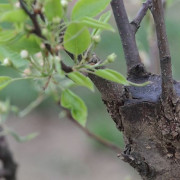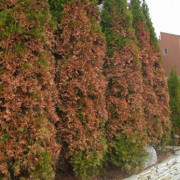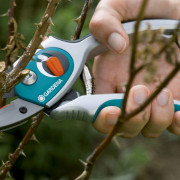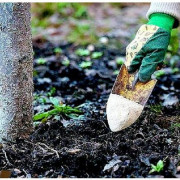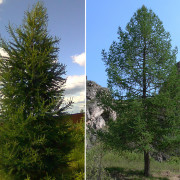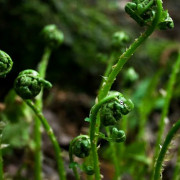Uprooting Trees - How to Get Rid of Tree Roots
Content:
- Uprooting trees
- How many trees live
- How to remove dried trees from the site
- How to get rid of tree stumps and roots
- Removing wood residues from dry soil by crushing
- Grubbing stumps in the area with an ax and crowbar
- How to get rid of stumps without uprooting: a chemical method of burning out with saltpeter
- Using bark to mulch trees and shrubs
In almost every summer cottage, it becomes necessary to get rid of a growing tree. The reasons for this may be different: the tree is withered or rotted, creates too much shadow, the danger of breaking power lines, and the like. In addition, negative processes taking place inside dying plants can reach neighboring plants and kill them. If splitting a tree is not difficult, then removing the remaining stump can be quite a serious task.
Uprooting trees
If the tree can still be saved, then you can use the services of specialists - arborists, of whom there are a lot in large cities, for example, in Moscow and the Moscow region. Their prices are not too exorbitant.
However, if a decision is made, you should proceed to the destruction of the tree. Uprooting trees consists of several stages, the first of which is cutting down the main trunk.
How many trees live
Depending on the species, the lifespan of trees can range from several tens to several thousand years. At the same time, the process of their growth does not stop, which implies an increase in the diameter of the trunk and the size of the root system. This is also influenced by the growing conditions: soil composition, the presence of precipitation, and the ecological situation.
The table below provides information on how many trees live, the most common in Russia. Values in parentheses are for favorable conditions under which they can live much more.
| View | Maximum height, m | Life age, years |
| Homemade plum | 6-12 | 15-60 |
| Alder gray | 15-20 (25) | 50-70 (150) |
| Aspen | up to 35 | 80-100 (150) |
| Mountain ash | 4-10 (15-20) | 80-100 (300) |
| Thuja western | 15-20 | over 100 |
| Alder black | 30 (35) | 100-150 (300) |
| Warty birch | 20-30 (35) | 150 (300) |
| Elm smooth | 25-30 (35) | 150 (300-400) |
| Balsam fir | 15-25 | 150-200 |
| Siberian fir | up to 30 (40) | 150-200 |
| Common ash | 25-35 (40) | 150-200 (350) |
| The apple tree is wild | 10 (15) | up to 200 |
| Common pear | up to 20 (30) | 200 (300) |
| Rough elm | 25-30 (40) | up to 300 |
| European spruce | 30-35 (60) | 300-400 (500) |
| Scots pine | 20-40 (45) | 300-400 (600) |
| Small-leaved linden | up to 30 (40) | 300-400 (600) |
| Forest beech | 25-30 (50) | 400-500 |
| Siberian cedar pine | up to 35 (40) | 400-500 |
| Spruce prickly | 30 (45) | 400-600 |
| European larch | 30-40 (50) | up to 500 |
| Siberian larch | up to 45 | up to 500 (900) |
| Common juniper | 1-3 (12) | 500 (800-1000) |
| Common false beetle | up to 100 | up to 700 |
| European cedar pine | up to 25 | up to 1000 |
| Yew berry | up to 15 (20) | 1000 (2000-4000) |
| English oak | 30-40 (50) | up to 1500 |
| Norway maple | 12-28 | up to 150 |
How to remove dried trees from the site
Before you uproot the stump, you need to get rid of the tree. Dried wood should be removed in parts. First you need to get rid of twigs and branches on the trunk itself. If the tree is large and strong enough, you can climb it with the utmost care. If it is of small height, it is worth using a ladder or stepladder.
When the near-stem branches are removed, you can proceed to the next stage, namely, to trim the trunk. In this case, it must be cut down in parts, first the upper part, and then the lower one, leaving a stump about one and a half meters high. It is advisable to lower the upper parts of a large trunk down on a rope.
For safety, it is necessary to determine in advance the cleared place where it is planned to dump the tree. Then gradually file the trunk from different sides, making it tilt in the desired direction.
How to get rid of tree stumps and roots
The word "uprooting" should be understood as the process of pulling a stump out of the ground with great effort. Therefore, the main difficulty of uprooting is to rid the garden plot of the roots, which, in fact, hold the tree in the ground.
Ways to uproot an old stump on the site
There are three ways to remove stumps:
- mechanical, with the help of special devices, including those replacing a person. This method includes crushing and uprooting using a tractor or mechanical winch;
- chemical with the use of chemically active substances. The method is quite simple, but it requires a lot of time (about a year) and the cost of purchasing the necessary drugs;
- manual, when only improvised tools and human strength are used for uprooting. This method is most effective only for a stump that has a small diameter, or if it is dry or rotten.
Removing wood residues from dry soil by crushing
For this method, a special device called a crusher is used. It is a powered vertical milling cutter that cuts dry wood residues piece by piece. As a result, a hole and chips remain from the stump.
Such services are provided by specialized organizations. You can also purchase a crusher for personal use at a chainsaw or other similar tool store.
However, this method also has its drawbacks. When crushing, the roots are practically not affected, so the solution to the problem of how to get rid of the roots of trees remains at the discretion of the owner of the site. After removing the stump in this way, no new tree can be planted in its place for at least three years. Well, the negative processes that led to the drying out of the tree continue in the roots and can spread to the rest of the trees planted on the site. The same applies to pests that cannot be corroded in this way.
Grubbing stumps in the area with an ax and crowbar
First, you need to excavate the ground around the stump at a distance of 0.5-1 m and to a depth of up to half a meter (depending on the root system of the tree). After that, chop off the roots with an ax in a circle, trying to capture the largest possible number of them. This will determine how easily the stump will come out of its place. If the trunk diameter is small (up to 20 cm), then with the help of a scrap you should split the wood, thus removing the stump in parts.
If the tree is large enough, then a different method must be used, for which an assistant and a little preparation are needed. On the stump itself, you need to apply horizontal grooves to which the rope should be hooked. The helper will pull the trunk in different directions, trying to loosen the stump. This will expose other roots, which should also be chopped off.
The larger the diameter of the stump, the more roots hold it in the ground.Some tree species, such as the baobab tree, have an exceptionally wide trunk up to 8 m in diameter. The growth process lasts as long as the trees live.
How can you uproot trees if the effort is not working? In this case, you can use a mechanical winch mounted on the tractor. The danger is the breaking of the rope, since in this case it can damage not only the surrounding plants or the tractor itself (windshield), but also injure people. Therefore, when using technology, unnecessary ones should be removed from the danger zone. The main disadvantage of mechanized uprooting of trees and stumps is the preparation of the working space and its inapplicability in hard-to-reach places, as well as a decent cost estimate.
Another disadvantage is that it is not known how to remove the remnants of tree roots from the site.
Tools and implements needed to cut and uproot a tree
A basic set of tools for uprooting stumps can be found on every home plot:
- shovel (for excavating the ground and chopping off small roots);
- ax;
- hacksaw;
- rope (for tilting the trunk);
- comfortable shoes, gloves;
- manual or mechanical winch (if necessary).
How to get rid of stumps without uprooting: a chemical method of burning out with saltpeter
How to destroy the roots of felled trees without using manual uprooting? Chemistry will help with this. The main requirement is to have a lot of time. For example, if the laying of saltpeter occurs in the summer, then the stump should be burned out the next spring.
On the surface of the stump, holes are drilled with a diameter of about 1 cm and a depth of 40 cm. Potassium or sodium nitrate is poured into them in an amount of 100 g each, and water is poured on top. After that, the holes are plugged with wooden plugs, and the stump itself is covered with plastic wrap to prevent moisture from entering. In this state, the stump is left until spring.
In the spring, the film is removed and the plugs are removed. Any flammable liquid is poured into the holes and set on fire. Saltpeter has already penetrated deep into the root system and releases oxygen during combustion. Therefore, the stump is completely burned out down to the smallest roots, which allows you to remove pathogens of tree diseases. It is not required to remove it manually.
In case of an overdose of chemicals, the soil becomes contaminated with saltpeter. You can not use this method on peat soils, otherwise you can burn not only the stump, but the entire area along with the house.
Rooting up the stump with urea
The process itself is similar to the one described above, however, it does not require burning, so it can be used on any kind of soil.
The stump is cut flush with the ground, after which deep holes are made in it, where urea is laid, and water is poured from above. The holes are plugged and the stump is covered with foil. After a year, the tree is completely destroyed, down to the roots.
The obvious advantage is that urea as a fertilizer creates a fertile soil layer, therefore, after such processing, it is enough to dig up the ground and you can plant any plants. Well, and most importantly, you do not need to uproot the stump manually.
The disadvantages include the long destruction period of the stump and the cost of purchasing urea.
Using bark to mulch trees and shrubs
Mulching is the covering of the soil with a layer of organic or inorganic material to create favorable conditions for the development of plants (preservation of moisture and nutrients in the soil, protection of roots from overheating, no weeds) and increase the attractiveness of the garden plot from an aesthetic point of view. It can be carried out both in the greenhouse and in the open field.
The very material that is used for this is called mulch. The use of tree bark in this capacity has a number of advantages:
- the bark rots and saturates the soil with nutrients;
- lowers the acidity of the soil, which is required for the cultivation of certain types of plants;
- the bark behaves like a natural filter for water, preventing harmful elements from penetrating to the roots;
- prevents the hardening of the topsoil. It allows you to reduce weeding to a minimum, which is especially important for plants with a shallow root system;
- it contains elements that do not allow the development of diseases such as gray rot, fungal infections, root decay;
- allows you to expel a special class of pests from the surrounding soil - soil nematodes (roundworms). These parasitic organisms are the cause of many diseases in plants;
- helps to increase the lifespan of trees.
How to chop tree bark at home
For mulching, the bark of any breed is used, the only condition is that it should not be alive, because removing the bark from them can lead to the death of the plant. Old or decayed trees should also be avoided. Pests or pathogens can live in them. It is best if trees cut down less than six months ago are used.
To determine if the bark is suitable for mulching, a small piece of bark must be removed. If it comes off easily, it can be used for mulch.
After removing the bark, it must be crushed so that the size of an individual piece does not exceed 5 cm. This can be done either manually using scissors or pruning shears, or automated in a garden shredder.
The next step is to sterilize the material. This is done to exclude infection of plants with diseases and pests.
There are two ways:
- boiling in water for 10 minutes;
- heating in the oven for 15-20 minutes. at 70 ° C.
You need to mulch trees in spring or autumn on fertilized soil. The soil should be dry and warm (especially in spring). Fertilizers can be used both organic - horse or cow manure - and mineral fertilizers: urea, carbamide, ammonium nitrate, phosphorus and potassium-containing substances.
After that, you can proceed directly to mulching. The bark is poured in a layer of 2-5 cm, leaving a free space around the shrubs of 50 cm, and around the trees - 80 cm.
When choosing a method for removing a stump from a summer cottage, several factors should be taken into account at once, such as labor costs, the availability of time and the necessary tools, as well as free access to the remains of a tree. It is also necessary to answer the question of what tasks the removal of the old stump from the territory helps to solve and is it not better to leave it as a decorative element.
